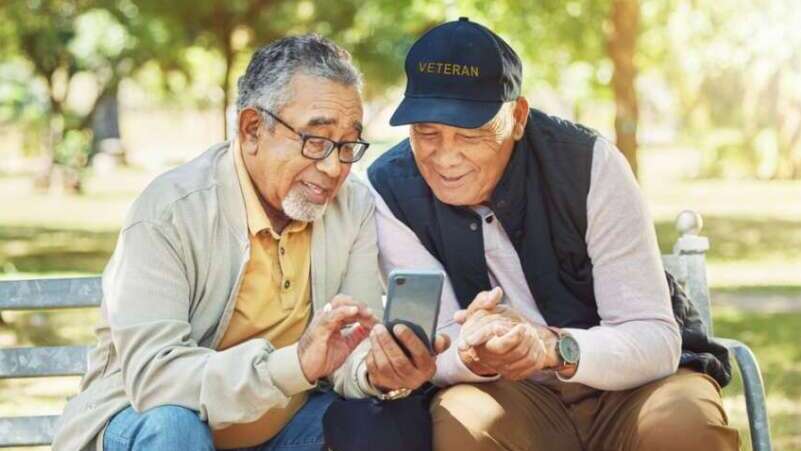
The Department of Veterans Affairs (VA) is celebrating the two-millionth download of its VA: Health & Benefits mobile app, which is receiving high praise from veterans – especially those using assistive technology.
The VA soft-launched the app in August 2021 to ensure its features were working properly, but the app now has over a million monthly users sending more than 300,000 secure messages and refilling more than 250,000 prescriptions monthly.
The app currently has a 4.8 rating on the Apple Store and a 4.6 rating on Google Play, rivaling industry leaders like USAA and Uber.
“Over time, we have added features and become much more public about the app, leading to today’s milestone where we’re celebrating the two-millionth download,” VA Chief Technology Officer (CTO) Charles Worthington told reporters during a media roundtable on Thursday.
“I think this is a really great example of applying civic technology and the Digital Service Playbook to a really important product area, which is obviously helping our current veterans get the easiest access possible to those services,” Worthington said.
The app reflects the redesigned VA.gov website, which the agency launched in 2018 to serve as a digital front door for veterans. The VA: Health & Benefits mobile app offers a different view of that system for tech-savvy veterans who want to be able to access these features in a quick and easy way.
Veterans log in to the app the same way they do on VA.gov with their credentials. However, once they log in for the first time, Worthington said the app will then allow them to use Face ID or Touch ID to log in for the next 45 days, offering “a faster log in process.”
Some of the app’s main features include viewing upcoming appointments, messaging your doctor via secure messaging, refilling and tracking prescriptions, and checking the status of your disability claim.
Chris Johnston, the deputy CTO for digital experience in the VA’s Office of Information Technology (OIT), explained that push notifications also provide a more instant transaction for veterans.
“You can imagine that I get a push notification that says, ‘Your doctor has responded to your message.’ I look at my phone and login instantly. I see that response to my doctor while I’m standing in line at the grocery store,” Johnston said. “It’s all very, very quick and happens instantly and reduces a lot of anxiety for veterans who are frequently waiting for responses from VA.”
Additionally, Worthington said the VA has found that a number of veterans who need assistive technology – such as text-to-speech or dictation technology – have switched to primarily using their smartphones as their assistive devices.
“That’s a unique opportunity and challenge in some ways because each device handles accessibility in slightly different ways,” Worthington said. “But, I think that this team has been really intentional about leveraging the accessibility capabilities that are unique to both the Android and Apple operating systems.”
For example, the app can assist veterans who are visually impaired by having their smartphone read their claims decision letters to them. This way, the veteran doesn’t have to wait for a physical letter to come in the mail and then find someone to read the letter to them.
Worthington said his team makes sure to find veterans that use assistive technology in its user testing, which he said is “a real way to know for sure how well the tools are working.”
“In terms of value that a veteran would get from this app: it’s simple and it’s a fast experience,” added Rachel Han, the product lead in VA’s OIT. “Fast in that we really care about reducing the amount of work veterans do.”
“We really want to make sure for example, with push notifications or the human-centered design process that we reduce the number of clicks and reduce the amount of time and work overall,” she said. “From a simple and fast perspective, it’s extremely valuable to veterans.”
So, what’s next for the app? Worthington said veterans can look out for upcoming features such as a better way to submit travel claim submissions, which is “reimbursement for traveling to your appointments.”
“We also have some improvements to the disability claim tool, as well as the ability to check in for appointments from the app,” Worthington added. “So, those are some of the highlights that we’re looking forward to this coming year.”
